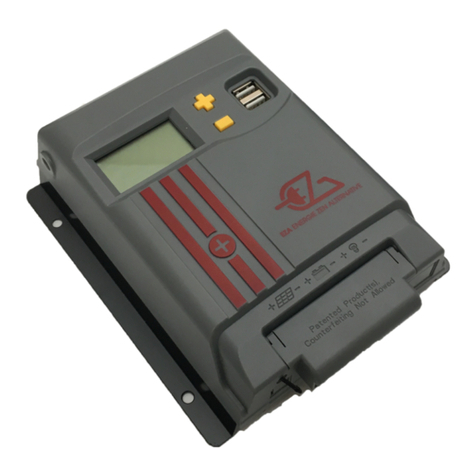5
2.Functional Characteristics
2-1. General Information
ECB-series is new generation power inverter equipped with N+1 parallel power
function , 3-phase capability, and AC transfer switch. ECB series is suitable for RV,
Marine and Emergency appliances.
Features
Parallel redundancy design for power expansion
Multiple industrial applications that create 1Ф3W / 3Ф4W power systems
User-friendly remote control
Automatic master mechanism to eliminate single point failure and optimize
reliability
Built-in ATS and AC circuit breaker
Optional STS module, transfer time is less than 4ms.
RS-232 communication
Input & output fully isolation
Output voltage / power saving mode is selectable by DIP switch and remote
control (CR-10)
Input Protection:Reverse Polarity (Fuse) / Under Voltage / Over Voltage
Protection
Output Protection:Short Circuit / Overload / Over Temperature / Over Voltage
Protection
To get the most out of the power inverter, it must be installed and used properly.
Please read the instructions in this manual before installation and operation of this
model.
2-2. Application
2-2-1. Power tools–circular saws, drills, grinders, sanders, buffers, weed and hedge
trimmers, air compressors.
2-2-2. Office equipment –computers, printers, monitors, facsimile machines,
scanners.
2-2-3. Household items –vacuum cleaners, fans, fluorescent and incandescent
lights, shavers, sewing machines.
2-2-4. Kitchen appliances –coffee makers, blenders, ice markers, toasters.
2-2-5. Industrial equipment –metal halide lamp, high pressure sodium lamp.
2-2-6. Home entertainment electronics –television, VCRs, video games, stereos,
musical instruments, satellite equipment.
2-2-7. Vehicle, yacht and off-grid solar power systems.




























